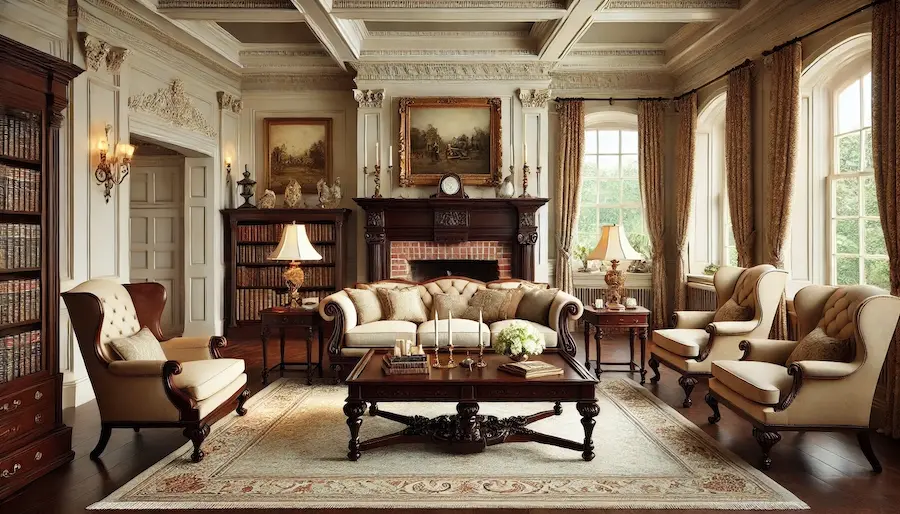A Colonial living room embodies timeless elegance and traditional design, drawing inspiration from the architectural and interior styles prevalent during the American colonial period of the 17th and 18th centuries.
History and Origins of Colonial Design
Colonial design emerged during the era of European colonization in America, reflecting a blend of European influences adapted to the New World. Early colonial homes were characterized by simplicity and functionality, with interiors featuring exposed beams, wooden paneling, and handcrafted furniture. As the colonies prospered, the interiors evolved to incorporate more refined elements, including intricate woodwork and elegant furnishings, mirroring the styles of the settlers’ countries of origin.
Key Features of a Colonial Living Room
- Symmetrical Layouts: Colonial living rooms often feature balanced and symmetrical arrangements, with furniture and decor pieces mirroring each other to create a harmonious space.
- Natural Materials: Utilization of wood is prominent, with hardwood floors, exposed beams, and wooden furniture pieces contributing to the room’s warm and inviting atmosphere.
- Neutral Color Palettes: Walls and furnishings typically showcase neutral tones such as whites, creams, and soft grays, providing a calm backdrop that highlights the room’s architectural features.
- Fireplaces as Focal Points: A traditional fireplace often serves as the centerpiece of a colonial living room, offering both warmth and a gathering place for family and guests.
- Antique or Reproduction Furniture: Incorporating period-appropriate furniture, such as high-backed chairs, wooden chests, and upholstered sofas, adds authenticity and charm to the space.
Applications of Colonial Design in Living Rooms
- Decorative Moldings and Trim: Adding crown moldings, wainscoting, and chair rails enhances the room’s architectural interest and reflects colonial craftsmanship.
- Traditional Textiles: Incorporate area rugs with classic patterns, such as oriental designs, and use fabrics like linen or wool for upholstery and curtains to add texture and comfort.
- Lantern-Style Lighting: Utilize lighting fixtures reminiscent of colonial-era lanterns, crafted from iron or brass, to provide ambient illumination and historical ambiance.
Considerations When Designing a Colonial Living Room
- Authenticity vs. Modern Comfort: While aiming for historical accuracy, ensure that the space remains comfortable and functional for contemporary living by integrating modern amenities subtly.
- Attention to Detail: Incorporate period-appropriate accessories, such as candlesticks, vintage books, and decorative art, to enhance the room’s authenticity and charm.
- Quality Craftsmanship: Invest in well-crafted furniture and finishes that reflect the durability and artisanship characteristic of colonial interiors.
Conclusion
Designing a Colonial living room involves blending historical elements with modern functionality to create a space that is both elegant and inviting. By focusing on symmetrical layouts, natural materials, and period-appropriate furnishings, you can achieve a timeless interior that pays homage to America’s rich architectural heritage.
